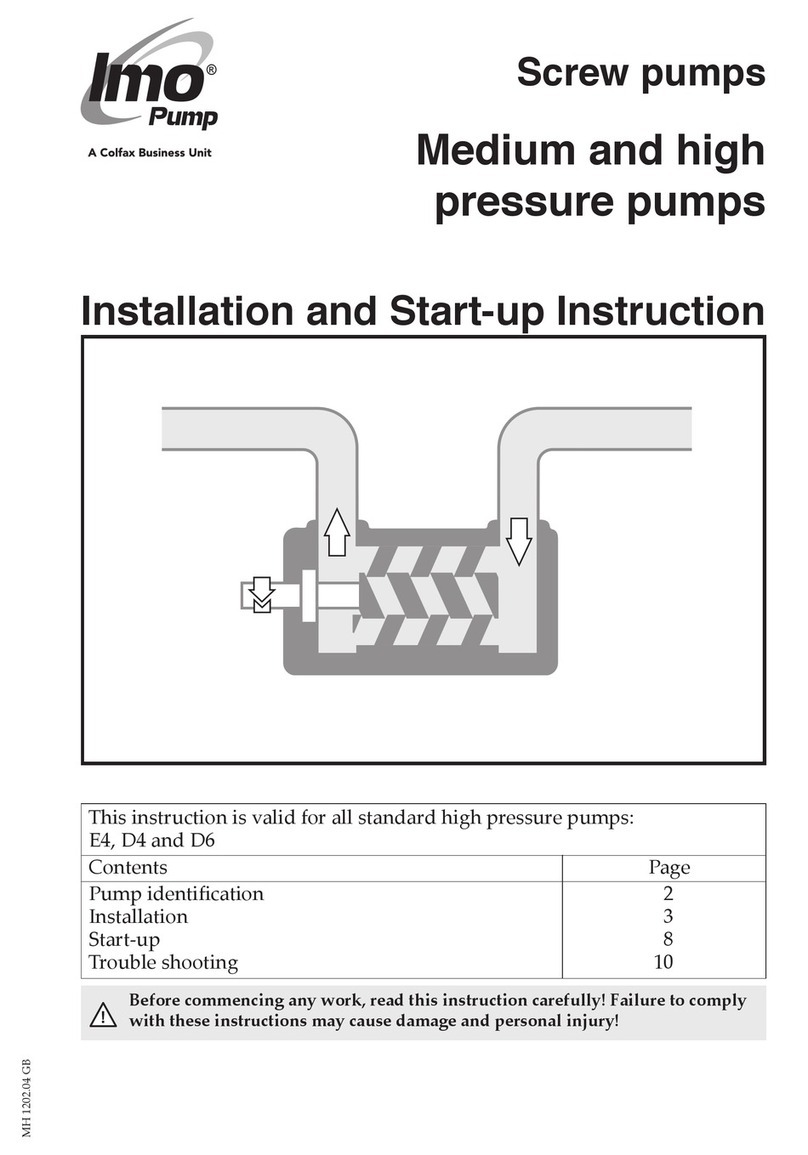
Table of contents
iv
Series AE.N
Construction Type RG
BA-2011.04
760.0003 GB - 151 999
6.7.2
Safety device in the pressure
line..............................................15
6.7.3
Electrical connections ................16
7
Operation.................................................17
7.1
Preparing for initial start-up........17
7.1.1
Filling the pump with liquid.........17
7.1.2
Pump rotation difficulties............17
7.1.3
Checking the direction of
rotation.......................................17
7.2
Bringing the pump into
operation....................................17
7.2.1
Starting.......................................17
7.2.2
Drive...........................................17
7.2.3
Checking pump capacity............17
7.2.4
Dry-running protection ...............17
7.3
Taking the pump out of
operation....................................17
7.3.1
Stoppage....................................17
7.3.2
Measures for longer periods of
downtime....................................18
7.4
Special applications of the pump18
8
Maintenance cycles and intervals ........19
9
Preventive Maintenance ........................20
9.1
Preventive Maintenance ............20
9.1.1
General monitoring ....................20
9.1.2
Universal joints...........................20
9.1.3
Drive shaft bearing and bearing
lubrication...................................20
9.1.4
Spur gear ...................................20
9.1.5
Shaft seal...................................21
9.1.5.1
Stuffing box................................21
9.1.5.2
Running gear seal......................22
9.1.6
Drive motors and (variable) gear22
10
Maintenance............................................23
10.1
Disassembly and assembly
instructions.................................23
10.1.1
Disassembling the progressing
cavity pump................................23
10.1.2
Removing the stator...................23
10.1.3
Removing the rotor and rotor-
side joint.....................................23
10.1.4
Removing the universal joint
shaft and the drive-side joint......25
10.1.5
Removing the stub shaft and
worm shaft..................................25
10.1.6
Removing the stub shaft on
pump sizes 100 … 2700............25
10.1.7
Removing the drive shaft and
spur gears on pump sizes 100
… 2700.......................................25
10.1.8
Removing the drive shaft on
pump size 5000..........................25
10.1.9
Removing the hollow shaft and
spur gears from pump size 500026
10.1.10
Removing the running gear seal26
10.2
Assembling the progressing
cavity pump ............................... 26
10.2.1
Installing the drive shaft and
spur gears on pump sizes 100
… 2700......................................26
10.2.2
Installing the hollow shaft and
spur gears on pump size 5000..28
10.2.3
Installing the rotor and rotor-side
joint............................................30
10.2.3.1
Tightening with Band-It clamping
tool and adapter J050................ 31
10.2.3.2
Tightening with clamping tool PoK-
It II.............................................. 32
10.2.4
Installing the universal joint
shaft and the drive-side joint .....32
10.2.5
Installing the stuffing box casing33
10.2.6
Installing stub shaft and worm
shaft on pump sizes 100 …
2700...........................................33
10.2.7
Installing the drive shaft and
worm shaft on pump size 5000 .33
10.2.8
Installing the running gear
cartridge.....................................33
10.2.8.1
General information about running
gear seals.................................. 33
10.2.8.2
Design and functionality of the
running gear seal....................... 34
10.2.8.3
Installing the running gear seal . 34
10.2.9
Installing the shaft seal..............36
10.2.10
Installing the stator ....................36
11
Spare parts .............................................38
11.1
Index of spare parts and
recommended spare/reserve
parts........................................... 39
11.2
Sectional drawing for series
AE.N; RG construction type;
sizes 100 … 2700...................... 43
11.3
Sectional drawing for series
AE.N; RG construction type ...... 44
11.4
Sectional drawing for series
AE.N; RG construction type;
size 5000 ................................... 45
11.5
Sectional drawing for series
AE.N; RG construction type ...... 46
12
Causes and removal of operational
faults .......................................................47
13
Clearance certificate..............................49
14
Declaration according to EC
machinery directive...............................50






























